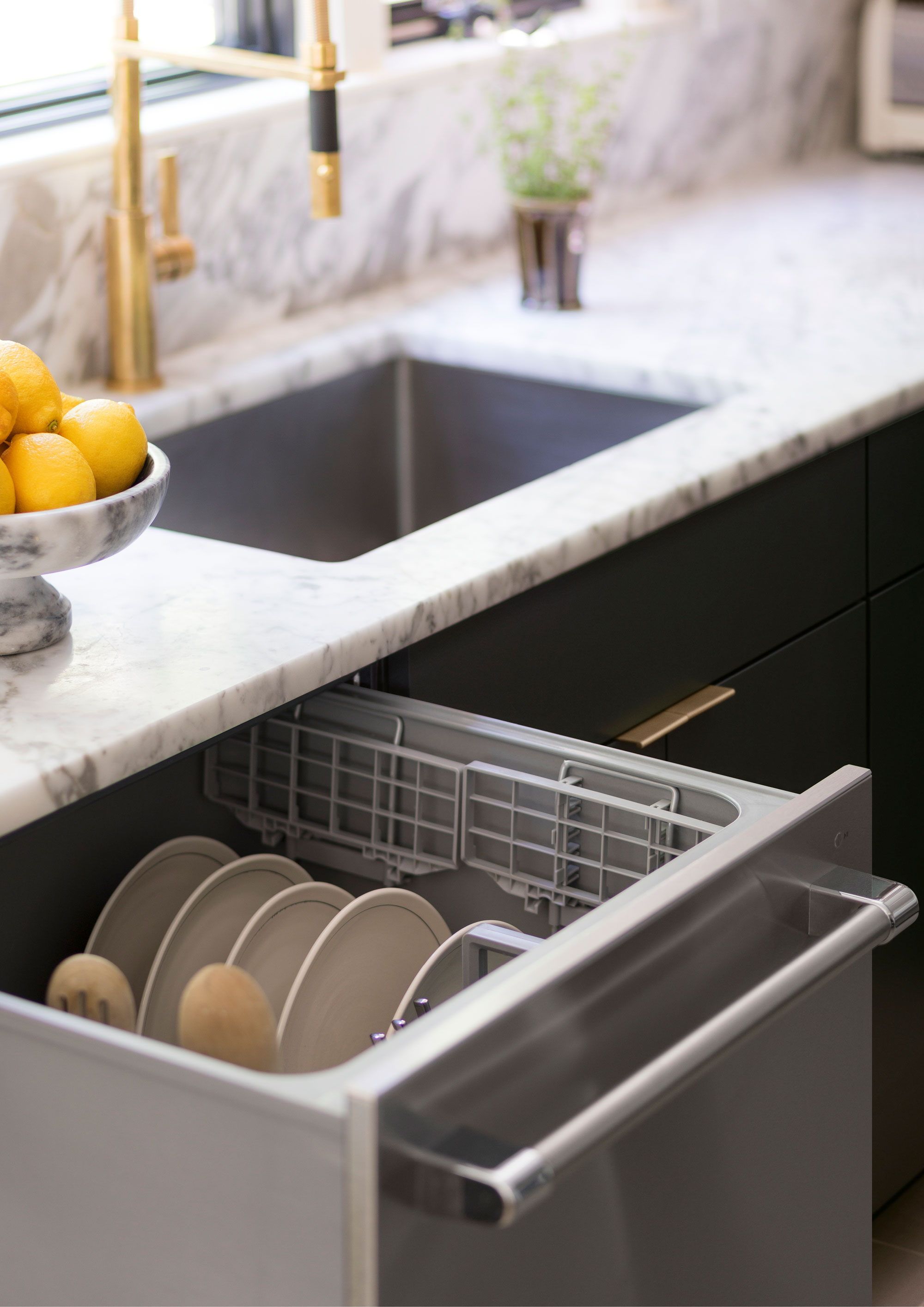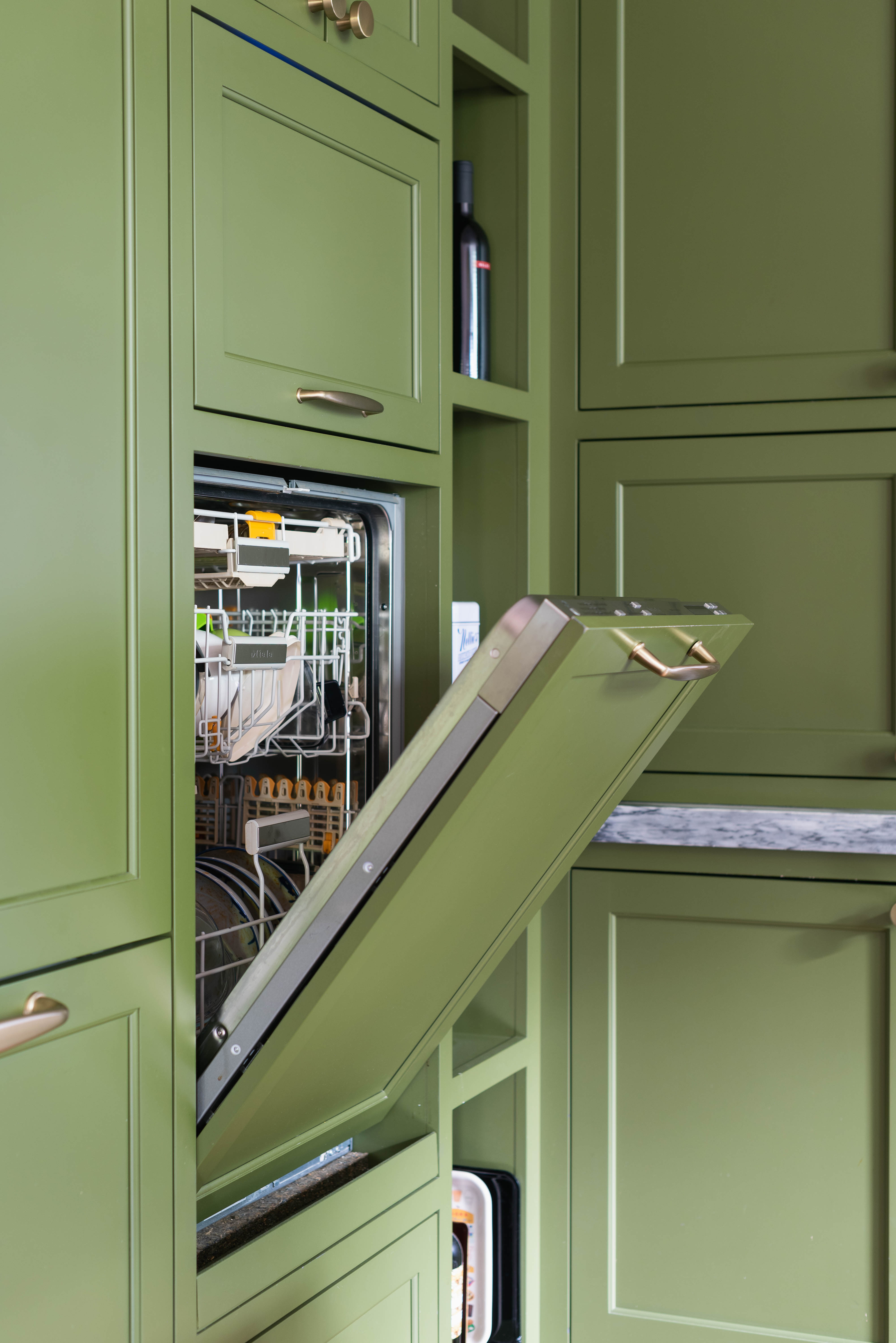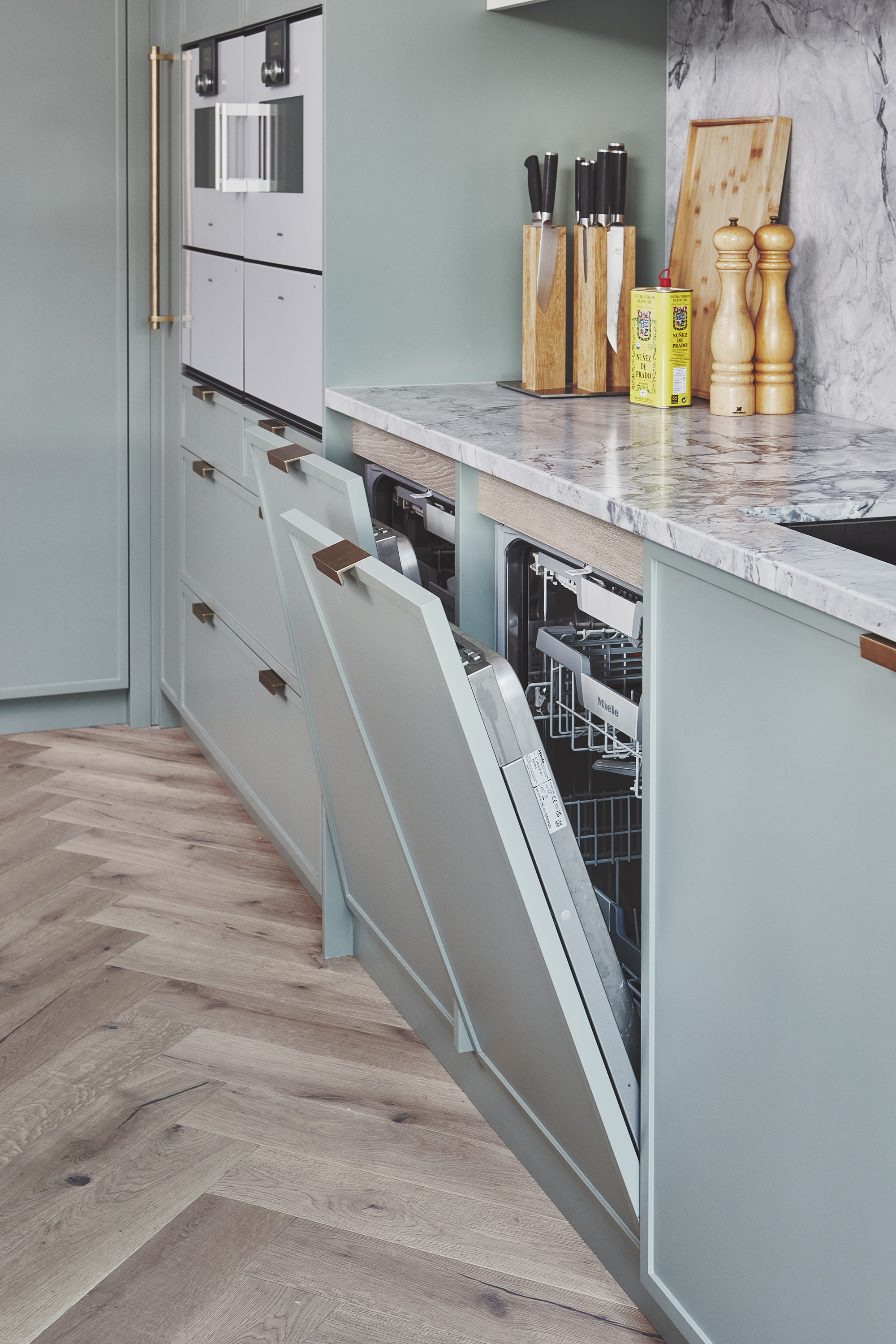I Asked a Cleaning Expert for Minimum-Effort Ways to Remove Mold From a Dishwasher — She Gave Me 4 Easy Tricks That'll Extend its Life, too
These techniques are quick, too


Yuk. Removing mold from a dishwasher is by no means at the top of the list of aesthetic improvements we're here for, but tackling this task will mean your dishes come out sparkling clean and your kitchen stays freshly-scented.
From cleaning the dishwasher with vinegar to using baking soda, there are many home remedies to ease this rigorous task and bring your appliance back to its high standard.
I asked a cleaning expert about what needs to be done to eliminate mold in a dishwasher. Here's what they had to say about it.
1. Take Out Dishes and Racks

Cleaning expert Elizabeth Shields from Super Cleaning Service Louisville says, the first step is to take out any dishes and racks.
"A very thorough clean is what you need to do for this," says Elizabeth. "Take out all the dishes and racks. You want full access to every corner where mold might be hiding."
The expert continues: "You can also wash the racks with the usual Dawn and sponge, then soak it in hot water in the sink. It’ll rinse away any grime or mold starting to build up on them." You can get your hands on the Dawn Platinum EZ-Squeeze Dish Soap priced at $23.65 from Amazon.
2. Scrub Away Gunk

If you want to clean your cookware the right way, you should probably first ensure that you've removed any unwanted food pieces from your dishwasher. If you don't do this, it can lead to mold and dirty dishes — the total opposite of what you're trying to achieve here.
"Have a look in the drain area for any big chunks of food, pieces of glass, or anything else that shouldn’t be there," says Elizabeth. "You can use a soft brush or a damp cloth to wipe away any obvious bits of gunk. The filter is the mold’s favorite hiding spot. Some dishwashers have a filter that you can throw away and replace, while others are connected to a garbage disposal that sort of takes care of themselves. Then, some have one or two filters you need to manually clean out."
Next, Elizabeth says you should "Soak the filter in warm water with a bit of Dawn for about 15 minutes tops just to loosen the grime. If you really want to go the extra mile, throw in a tablespoon of baking soda, then scrub with a brush, rinse, and put it back.
"For any patches of mold you can see, sprinkle baking soda directly on the area. I prefer to make it a paste so it clings better. If you have tougher spots, dip the brush in hydrogen peroxide. It’ll bubble away the mold and disinfect at the same time," the expert adds.
To tackle this step effectively, we recommend using Mr. Siga's Microfiber Cleaning Cloth from Amazon, priced at just $12.98, or this BFWood Laundry Stain Brush, priced at $8.99.
Elizabeth Shields is the Operations Manager at Super Cleaning Service Louisville. When she’s not managing the team, you’ll find her writing about everything from parenting tips to sustainable living and home improvement. She loves sharing ideas that make life just a little bit easier.
3. Opt for Commercial Cleaners

If you've got a double dishwasher kitchen and you're looking for a quick but thorough fix — cleaning expert Elizabeth says you can use commercial cleaners.
"For the faster route or if you just want to make sure everything is clean, you can use commercial cleaners available in the market," she says. "I usually go for Affresh Dishwasher Cleaner which is easy to use! Just pop one of these tablets in the bottom of your empty dishwasher, and run a normal cycle."
Elizabeth continues: "Another great option is the Finish Dual Action Dishwasher Cleaner. This is in a liquid formula, so it will surely dissolve easily. You’ll also need to run a hot cycle, but remove the sticker from the top of the bottle (leave the cap on) and stick it upside down."
4. Ensure You Clean the Rubber Seal

Lastly, "Don't forget the rubber seal around the dishwasher door!" says Elizabeth. "Clean it with a hot, soapy microfiber cloth. Moisture and gunk don't stand a chance, leaving no breeding ground for mold and bacteria."
Then, you can proceed to "polish the front of your dishwasher with a fresh, lightly moistened microfiber cloth until it sparkles. Leave the door open for a few hours to let it air dry completely. Mold can’t thrive in a dry environment, so this step is key. If you’re in a hurry, place a small fan."
FAQs
Why is mold growing in my dishwasher?
If you're wondering why mold is growing in your dishwasher, cleaning expert Elizabeth says the common cause of this is leaving the appliance damp and not allowing it to dry.
"If it’s always damp, especially if you don’t leave it slightly ajar after use, combined with poor air circulation, you’re basically giving the perfect combination for mold to grow inside," she says. "Do you also toss dishes in without rinsing and scraping? Those tiny bits of food can get into the corners at the bottom. Before you know it, your dishwasher smells off, and you’ve got a mold problem on your hands."
Can I put bleach in a moldy dishwasher?
The simple answer is no! Just don't do it. "There are dishwasher-safe alternatives that work better," explains Elizabeth. "Aside from that, even after a rinse cycle, traces might linger, especially in hidden spots like spray arms or filters. This residue can end up on your dishes, and for sure, you don’t want bleach-flavored coffee."
Follow this simple yet effective guide to ensure you clean your dishwasher thoroughly. Failing to do so will cause many problems, including health issues and a musty-smelling house. Lastly, not removing the mold could result in unsanitary plates, cups, and even utensils.
Not removing dirt from your dishwasher can also lead to food build-up and grease, which is unpleasant to see and smell. So grab your tools and get to cleaning — you won't regret it!
The Livingetc newsletters are your inside source for what’s shaping interiors now - and what’s next. Discover trend forecasts, smart style ideas, and curated shopping inspiration that brings design to life. Subscribe today and stay ahead of the curve.

Faiza is the Renovation Editor at Livingetc. She previously worked for The Independent as a News Feature Writer, where she crafted lifestyle, entertainment, and news stories. She also worked as an Audience Editor for the newspaper for almost two years. Thriving in the busy newsroom, Faiza also spent her time crafting stories for Sky News as an SEO reporter, where she produced stories based on trending topics. Lifestyle and interior design have been areas of interest for her for some time, and as she advances in this field, she will continue to refine her skills in all aspects of design. Faiza has a background in SEO, social media, and reporting. Her passion for writing goes beyond her work as she loves all things poetry and creative writing.